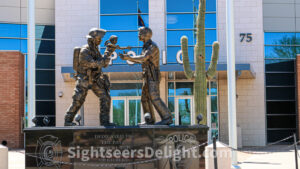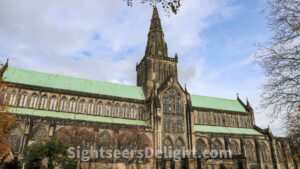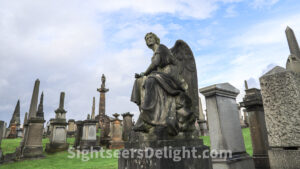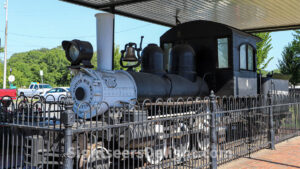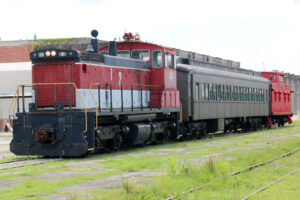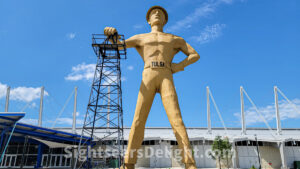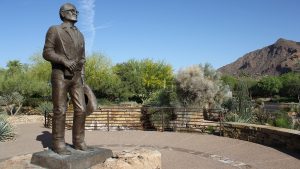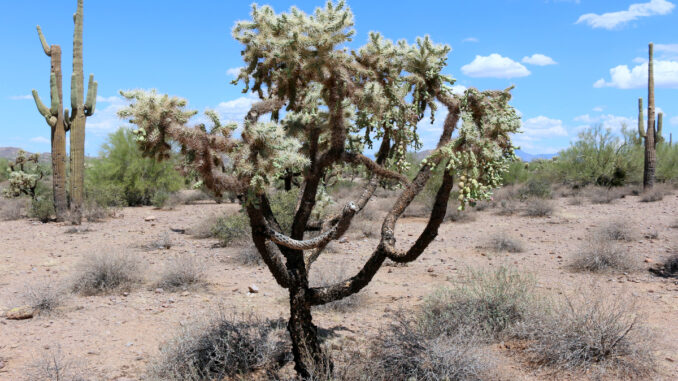
Guidebooks are annoying. Just because some editor who doesn’t know me tells me which restaurant is the best or what attraction is a must-see doesn’t make it a must-see attraction. Sightseers’ Delight is dedicated to the weird, the quirky and the fun. After all, traveling is fun.
If it’s not, you’re doing it wrong.
All of the places highlighted in this ever-growing database are great. Sightseers’ Delight has visited them all. We think you should make a point to see every one of them. But, this is not a guidebook. Just a webpage to help you plan your next adventure.
The Gilbert Public Safety Memorial was dedicated on April 30, 2007. Tempe Firefighter Steven Schneider designed the memorial. The police officer is a likeness of Rob Targosz, who was killed in the line of duty on April 30, 2006, by a drunken driver.
85296
Glasgow Cathedral, known as Cathair-eaglais Ghlaschu in Scottish Gaelic, is a historic parish church in Glasgow, Scotland, that belongs to the Church of Scotland. It is considered the oldest cathedral in mainland Scotland and the oldest building in Glasgow. The cathedral was once the seat of the Archbishop of Glasgow and, until the Scottish Reformation in the 16th century, it served as the mother church of the Archdiocese of Glasgow and the Province of Glasgow. The Bishop’s Castle, built in medieval times, once stood west of the cathedral until the 18th century. Saint Mungo, the patron saint of Glasgow, is honored at the cathedral, and his tomb lies in the Lower Church at the center of the building. The first stone cathedral was dedicated to Saint Mungo in 1136 in the presence of David I, and fragments of this structure have been found beneath the current cathedral, which was dedicated in 1197. The cathedral underwent significant rebuilding in the 13th century, and the University of Glasgow held its first classes in the cathedral’s chapter house after it was founded in 1451. Following the Reformation, the cathedral was partitioned to accommodate three separate congregations. However, in the early 19th century, there was a growing appreciation for the cathedral’s medieval architecture. Glasgow Cathedral has been Crown property since 1587 and under the state’s care since 1857. Today, it is the responsibility of Historic Environment Scotland, and the congregation is part of the Church of Scotland’s Presbytery of Glasgow.
The Glasgow Necropolis is a fascinating Victorian cemetery on a prominent hill east of Glasgow Cathedral. More than 50,000 people have been buried here, although only a few monuments have names, and not every grave has a stone. Roughly 3,500 monuments exist here, making it a truly unique destination for anyone interested in history or architecture. The creation of Père Lachaise Cemetery in Paris sparked a wave of pressure for cemeteries in Britain, requiring a change in the law to allow burial for profit. Glasgow was among the first to join this campaign, and the cemetery planning was started in 1831 by the Merchants’ House of Glasgow in anticipation of a change in the law. Glasgow Necropolis officially opened in April 1833, a year after the Cemeteries Act passed. It’s fascinating to see how this cemetery played a role in the changing social and legal landscape of the time.
Marietta’s own Glover Machine works built locomotive No. 81421 was in 1916. Coulbourn Brothers operated the 2-6-0 narrow gauge steam engine as No. 4. The steamer returned to Glover Machine Works in 1921. It has been displayed in Marietta since 1992.
The Gold Coast Railroad Museum, founded in 1956 and located in the former Naval Air Station Richmond (NASR), is one of Florida’s official state railroad museums. It houses a valuable collection of exhibits, including the Ferdinand Magellan. This observation car was built by the Pullman Company in 1929 and served as the Presidential Rail Car between 1943 and 1958.
The Golden Driller is a 75-foot-tall statue of an oil worker and is said to be the sixth-tallest statue in the United States. The steel frame structure is covered with concrete and plaster and weighs 43,500 pounds. The Mid-Continent Supply Company of Fort Worth built the initial version in 1952 for the International Petroleum Exposition, and it re-appeared again for the 1959 show. While it was a temporary feature, the company donated the statue to the Tulsa County Fairgrounds Trust Authority, which had it redesigned and permanently installed in front of the Tulsa Expo Center for the 1966 International Petroleum Exposition. The statue rests his right hand on an oil derrick that had been moved from a depleted oil field in Seminole, Oklahoma. The statue has stood in front of the Tulsa Expo Center since 1966.
74114
Two days after the massive earthquake of April 18, 1906, ruptured gas lines caused much of San Francisco to burn. Firefighters in many instances were unable to extinguish flames as fire hydrants had no water. However, firefighters vowed to make a stand at the intersection of Church and 20th streets. Miraculously, water flowed from a fire hydrant near the intersection and every April 18, the fire hydrant receives a new coat of gold paint.
94114
The Golden Gate Bridge is an icon of San Francisco. The famed bridge opened on May 27, 1937. To experience the bridge’s magnitude, head to Fort Point. This well-preserved Civil War era post is located on the southern side of the Golden Gate strait at the entrance of San Francisco Bay.
In 2004, the hometown of “Mr. Conservative” Barry Goldwater unveiled a statue of its most famous resident. Sculpted by Arizona artist Joe Beeler, the statue stands one-and-a-half times taller than Goldwater did in life. Located on a busy corner in the heart of Paradize Valley, Ariz., Goldwater’s likeness stands in the shadow of his former home. The monument is surrounded by neatly landscaped terrain featuring a plethora of local flora. An avid ham radio operator, Goldwater is perhaps best remembered for helping rekindle the conservative movement during the 1960s, publishing the acclaimed “The Conscience of a Conservative” in 1960.
85253

